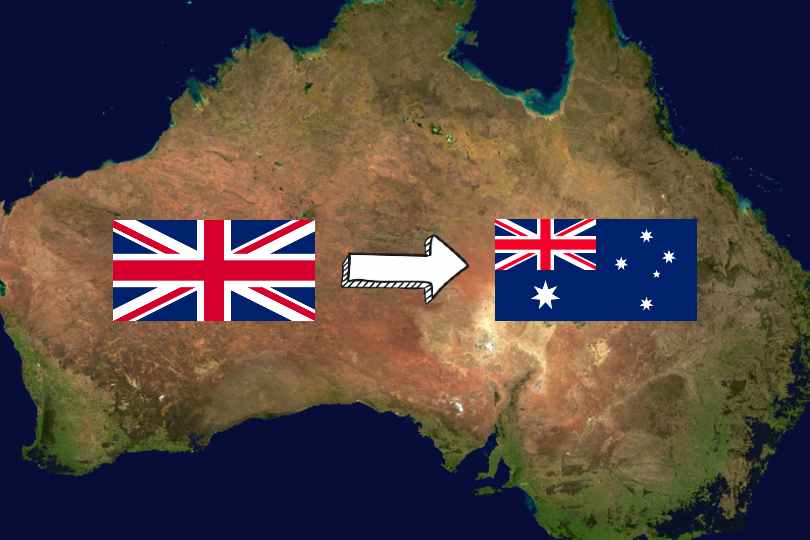
Are you retiring in Japan and trying to figure out what to do about your UK pension scheme? Read on to learn how to make an informed and tax-advantaged decision while avoiding the potential pitfalls of a pension transfer overseas.
Also consider: Read more about how to transfer your UK pension
Looking to transfer your UK pension?
Speak to me, Dan Ward, about transferring your UK pension funds to Japan.
Checklist for transferring a UK pension to Japan
- Collate all existing UK pensions
- Request a CETV (Cash Equivalent Transfer Value)
- Conduct a cost and performance comparison
- Identify your ideal solution for Japan – I can help with this
- Submit transfer request documentation to the existing and new provider
The advice requirement
When you hold more than £30,000 in safeguarded UK pension benefits, there is a statutory requirement to obtain appropriate, regulated advice before you can transfer your pension abroad or even within the UK. Yet, choosing the right financial adviser can be tricky.
Most UK-based advisers are unfamiliar with overseas schemes and expatriate affairs in general and might offer advice they are unqualified to provide. Only work with an adviser who specialises in international pension transfers and is fully conversant with all the tax implications of moving abroad. Failure to do so will leave you with little recourse if something goes wrong, potentially jeopardising your retirement plans.
I am an expert in this field and have extensive experience helping people make tax-efficient investments worldwide. If you have £25,000 in one or more UK pension schemes, I can ensure a compliant transfer process to the ideal plan for your situation. Contact me for fully regulated advice.
Your existing UK pension scheme
The very first step is to gather the details of your current pension. Having a few UK pensions with your current or former employers is common, and you may have a personal pension if you were self-employed or in place of additional voluntary contributions (AVCs).
UK pensions can vary hugely in terms of their names, structure and value for money, but they are all subject to the same regulatory framework governing taxes, contributions and withdrawals.
Tax relief usually applies automatically at your marginal UK income tax rate, but there are circumstances where some higher-rate taxpayers must claim this from His Majesty’s Revenue and Customs (HM Revenue). When invested, the growth of your contributions is always free of capital gains tax, and you can even withdraw a pension commencement lump sum of up to a quarter of your pot tax-free once you are ten years below your state retirement age, provided you are still a UK resident. Some countries may tax the lump sum once you are a non-UK resident, but I can help you avoid this.
When do you pay tax on your UK pension savings?
Generally, UK tax is only levied once you receive payments from your pension and only if your overall income is high enough. Many people drop into a lower tax bracket upon retirement and a few stop paying income taxes.
When you are living abroad, the tax implications in the new country will depend on your residential status. The UK government has negotiated a double taxation agreement with Japan, and this treaty protects you from being taxed twice on the same income.
However, a few instances can trigger tax charges on your UK pension even before withdrawing money from it.
Contribution limits are in place to restrict the amount anyone can pay into UK pension schemes per tax year. For most taxpayers, this is capped at £60,000, but the limit tapers in increments for anyone with relevant earnings of £200,000 or more. You will be taxed on the excess amount when you breach this annual allowance.
Before the spring of 2023, there was also a lifetime allowance limit of £1,073,100 on the total amount of pension savings anyone could accrue. There will be no tax charge for any breaches of this allowance in the tax year 2023-2024, but you should be aware that the opposition has promised to reinstate the lifetime allowance for subsequent tax years should they win the general election in 2024. If this concerns you, I can usually protect your money by transferring it to an overseas pension scheme.
Depending on your individual circumstances, a pension transfer to a scheme explicitly designed for offshore access can bring significant tax benefits when moving abroad. Yet there are some situations when you may not be permitted to transfer your pension.
Workplace
It’s been compulsory since 2012 for employers to auto-enrol their employees into an occupational pension plan, so unless you consciously decided to opt out, you should have at least one UK pension scheme for every employer you have had in the UK from that time.
Many people lose track of these valuable retirement assets, and if this is you, I suggest trying the UK government’s Pension Tracing Service. Provided you remember your former employment details, you should be able to round up all your pensions, ready for consolidation into a scheme explicitly designed for access offshore. You can always ask me if you’d like individualised advice on this.
Workplace pensions come in two distinct forms: defined benefit and defined contribution.
Defined benefit
This gold standard of UK pension schemes is highly prized because it guarantees a proportion of your former salary for life and often includes additional valuable benefits for your spouse and dependents. Yours may be ‘final salary’ or ‘career average’ and described as ‘unfunded’, which means it provides an annuity rather than a transferable pension pot. Still, whichever type of defined benefit plan you hold, if its value exceeds £30,000, you are legally obliged to consult an appropriate financial adviser before you can transfer your pension.
Your pension provider should only agree to the transfer request once you demonstrate that you have more than ample additional means of providing for yourself throughout retirement. I can certainly help you with a defined benefit pension transfer, but only if it is in your best interests, for example, when you have sufficient retirement savings in other plans.
Even if you do not depend on your final salary scheme, consider how you might feel if its pension value suddenly plummets after the transfer or even runs out altogether. It can take many years to reproduce the benefits of this kind of pension scheme.
If you’ve had a career anywhere within the UK public sector, it is overwhelmingly likely that you have a defined benefit arrangement. Still, there are a few private sector employers offering them, too. Either the British taxpayer or your former employer will pay your pension benefits.
Should the employer become insolvent, the Pension Protection Fund could compensate up to 90% of your forecast payments. However, early retirement may be impossible in that case, as you can only claim this once you reach your state retirement age.
Looking to transfer your UK pension?
Speak to me, Dan Ward, about transferring your UK pension funds to Japan.
Defined contribution
Every other workplace arrangement and all personal pensions fall under this heading. Again, there is much variation in their names and the value for money they provide, but they are all governed by the same UK rules concerning pension contribution limits, withdrawal and tax.
Generally, with this scheme, also known as ‘money purchase’, your provider invests your pension contributions on your behalf. In some cases, they do so across a very narrow range of funds to keep your money safe, but the investment growth is correspondingly lower. How much money you receive in retirement depends wholly upon this investment performance.
You might exercise more control over your occupational pension plan in a few exceptions. For example, you could have a group self-invested personal pension (group SIPP). If you are a company director or senior executive of a private firm, you may be a trustee of a small self-administered scheme (SSAS). Both of these pensions allow almost unlimited investing opportunities, even granting you the ability to hold commercial property as a retirement asset.
Still determining which type of workplace plan or plans you hold? Ask the pensions manager at work or speak with someone in HR. I can help you consolidate your various schemes into one manageable pot ideally suited for retirement in Japan, so do contact me for advice.
Personal
Like the defined contribution plans in the workplace, personal pensions come in various forms. You can find more information about yours on the annual statement from your provider, which might be an insurance company, bank or building society.
Two enduringly popular personal arrangements are stakeholders and self-invested personal pensions (SIPPs).
Stakeholder
This low-cost and low-risk UK pension scheme is accessible to virtually everybody, even non-taxpayers, yet appears most popular with higher earners. One great feature of a stakeholder is that it is guaranteed to be free of any exit penalties, and you can easily transfer it free of charge to another scheme more suitable for retirement in Japan, such as a SIPP.
SIPP
Technically a pension ‘wrapper’, a SIPP attracts the same tax incentives as any standard plan while granting access to a virtually limitless range of investment choices. If you already hold a SIPP, converting it into an international SIPP is far simpler, quicker and cheaper than transferring to an overseas pension scheme. We can simply begin moving your funds into offshore bonds right away and denominate a global currency of your choice.
Fund management fees may be eyewatering without help from a reputable financial adviser to ensure you are not missold specialist SIPP products you don’t even need. The larger your pot, the easier it is to negotiate low fees.
UK state pension
You can hold as many occupational and personal pension schemes as you want while still qualifying for the UK state pension. Eligibility is determined by making ten or more years of qualifying National Insurance (NI) contributions, but these don’t need to be consecutive tax years.
Check your NI history on the UK government Pension Forecasting website. Here, you can also find out your state pension age, which depends on your date of birth and is constantly reviewed, and whether it is possible to increase the amount of state pension payable by plugging any gaps in your NI history. You will also find a link to the International Pension Centre for further information about receiving your payments in Japan.
Please note that at the time of writing, there is no bilateral social security agreement currently in force between Japan and the UK. This means your UK state pension will be frozen, not rising in line with inflation, so it may not be worth making additional NI contributions.
However, the good news is once you are a resident of Japan, you can apply for this income to be exempted from UK income tax.
Pension transfer options for Japan
When retiring in Japan, you have two UK pension transfer options: a qualifying recognised overseas pension scheme based in the European Economic Area or an international SIPP. At first glance, they both achieve precisely the same results:
- Consolidation of multiple schemes into one expat-friendly pot
- Flexible pension drawdown
- Reduction of currency risk
Yet there are significant differences between the two schemes, so here’s how to ensure you choose the right way to access your pension abroad.
Qualifying recognised overseas pension scheme, QROPS
When a retirement savings plan in an overseas country is governed by a regulatory framework similar to UK rules, HM Revenue may consider it a qualifying recognised overseas pension scheme, QROPS. Currently, the pension system in Japan differs too significantly from UK arrangements for the inclusion of Japanese pensions in the QROPS scheme.
You might consider a QROPS based within the European Economic Area (EEA) instead, such as Malta. Unless you reside in the same country or jurisdiction, though, you must pay tax as an overseas transfer charge of 25% of your pot.
Still, the overall tax benefits are significant when your pension is nearing the lifetime allowance – should it be reinstated as promised by a Labour government.
Suppose your pot is much smaller than £1,000,000 and, therefore, not threatened by a return of the lifetime allowance. In that case, I can see no real advantages to transferring to a recognised overseas pension scheme. The best way to access your pension abroad in this situation is likely an international SIPP.
International SIPP
When transferring to an international SIPP, there is no requirement to reside in any EEA country to escape the overseas transfer charge as it is not provided by an international organisation. Instead, your SIPP actually remains in the UK, where the Financial Conduct Authority keeps a watchful eye on it and all SIPP providers.
Precisely as you would when transferring to a QROPS, you still gain access to the broadest possible range of offshore investments. You can also denominate a stable global currency to accrue and spend your pension overseas.
There is greater flexibility in terms of contributions and withdrawals, as you may continue to transfer funds into your international SIPP even after you’ve begun making withdrawals from it. In this way, you can potentially build more wealth for yourself and your beneficiaries long into retirement.
When researching the best international SIPP provider, there are a few factors to keep at the top of your mind before you commit to a transfer.
- Which is preferable: lower fees or a more comprehensive range of investment options?
- Would you rather pay a fixed annual amount or a percentage of your assets?
- How reliably can you gauge your risk appetite?
- Do your ethics and values influence your investing choices?
- Will you manage it all yourself, online, or leave it to your provider?
It is worth noting that some SIPP providers do not engage directly with members of the public, and you can only access their products via a financial adviser, stockbroker or similar.
What if you can’t transfer your pension?
Sometimes, you can’t transfer to a QROPS or an international SIPP. In other situations, the UK pension provider may agree to transferring against your best interests.
If this is you and you have been advised against a UK pension transfer, don’t worry; the scheme administrator should agree to pay direct credits to your bank account.
Direct Payment
To receive your pension abroad, all you have to do is supply your pension scheme administrator with your international bank account number (IBAN) and bank identification code (BIC); then, you can simply withdraw and spend your payments in Japanese yen.
You will pay exchange rate costs each time, which, due to currency fluctuations, could have significant implications for your retirement income, so consider this a last resort.
Looking to transfer your UK pension?
Speak to me, Dan Ward, about transferring your UK pension funds to Japan.
How to transfer UK pension to Japan FAQs
What happens to my UK company pension if I move abroad?
Except for some defined benefit company pension schemes, you can either transfer to a QROPS or an international SIPP.
If not, receiving income overseas is possible without transferring. You can always ask your UK pension scheme administrator to credit your bank account directly, although this option subjects you to considerable currency risk.
Can I transfer my UK pension overseas?
You can only transfer your UK pension to an overseas scheme with ROPS or QROPS status. Alternatively, consider transferring to an international SIPP, which achieves the same ends but usually with a faster and less costly process.
Only a financial adviser with extensive offshore pension transfer experience can give you the correct advice for your circumstances.
How do I transfer my UK pension?
To transfer to a QROPS or an international SIPP, you simply need your existing UK pension scheme information to obtain its cash equivalent transfer value (CETV). Once you have this, you are ready to conduct a cost and performance comparison to help you identify the best transfer solution. Then, all you need to do is complete the transfer request documentation and submit it to your current and new provider.
Unless you have professional experience in this area, it is wise to get advice from an expert and let them undertake pension transfers for you. There are many potential pitfalls when transferring, especially overseas – from pension scams to falling foul of red tape and even triggering possible unauthorised payment charges of up to 55% of your pension pot.
Please note
A pension is a long-term investment. The fund value may fluctuate and can go down, which would have an impact on the level of pension benefits available. Your pension income could also be affected by the interest rates at the time you take your benefits.
Overseas pension transfers can be complex. Make sure you take financial advice before you transfer your funds.




